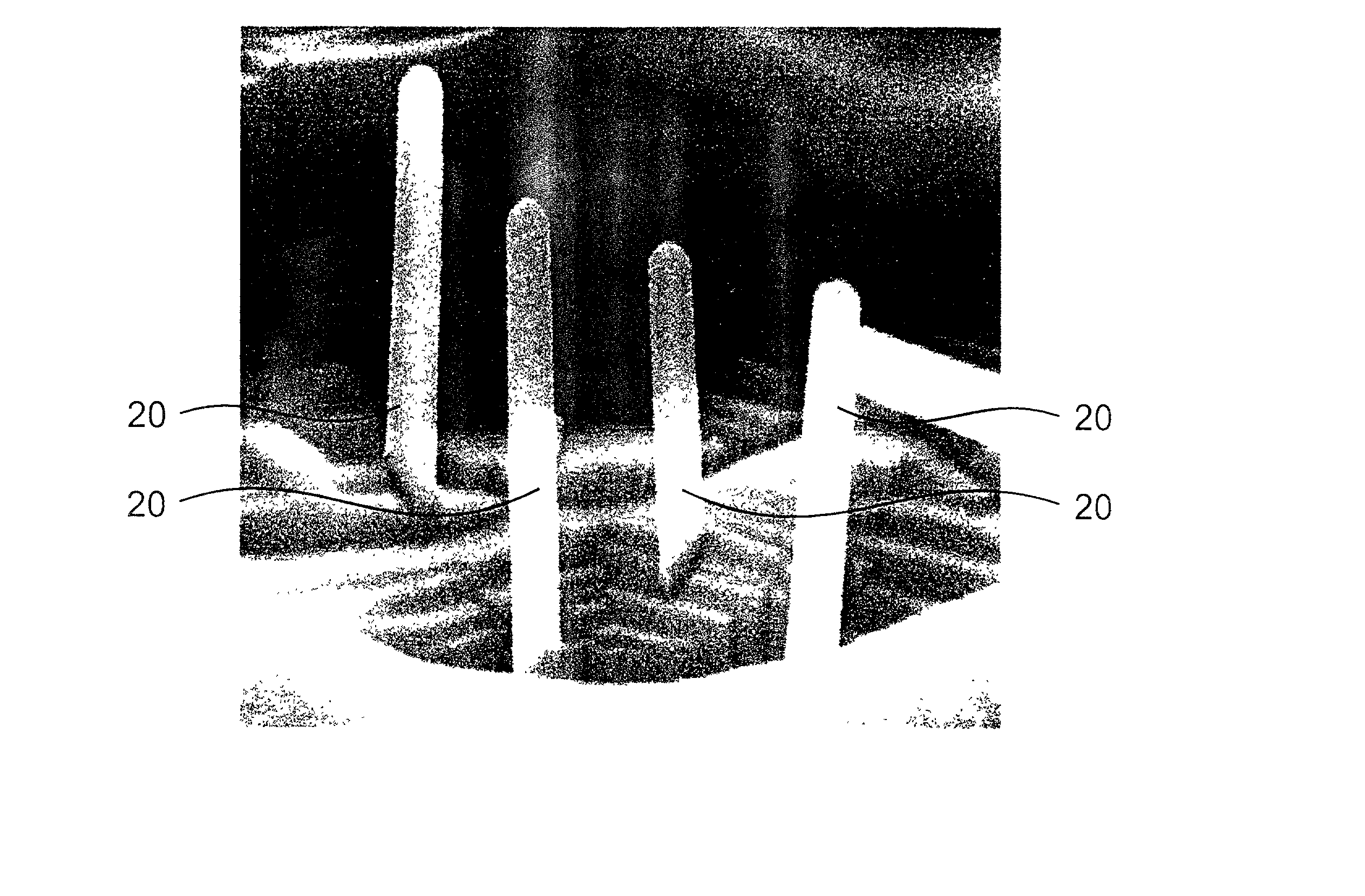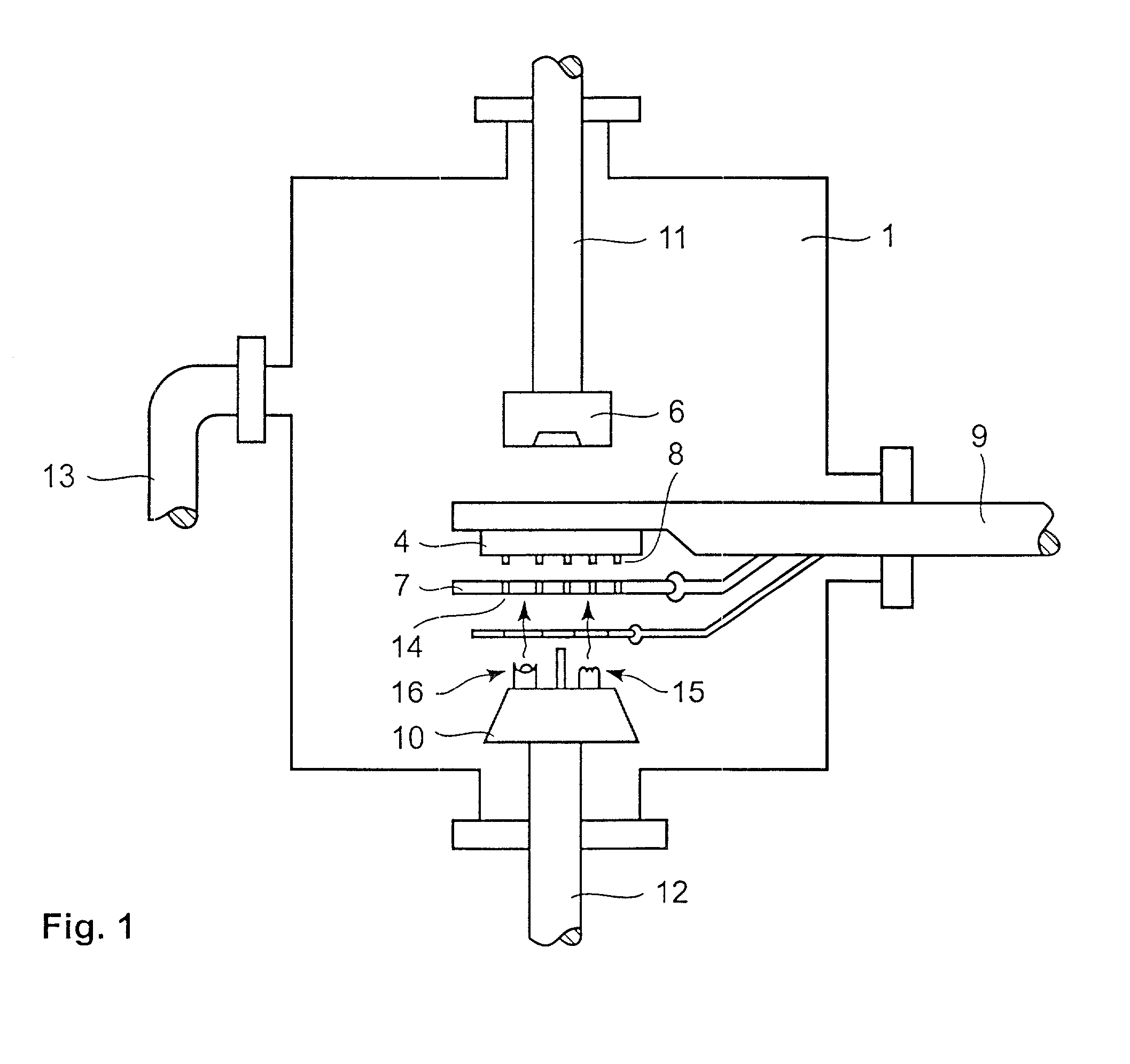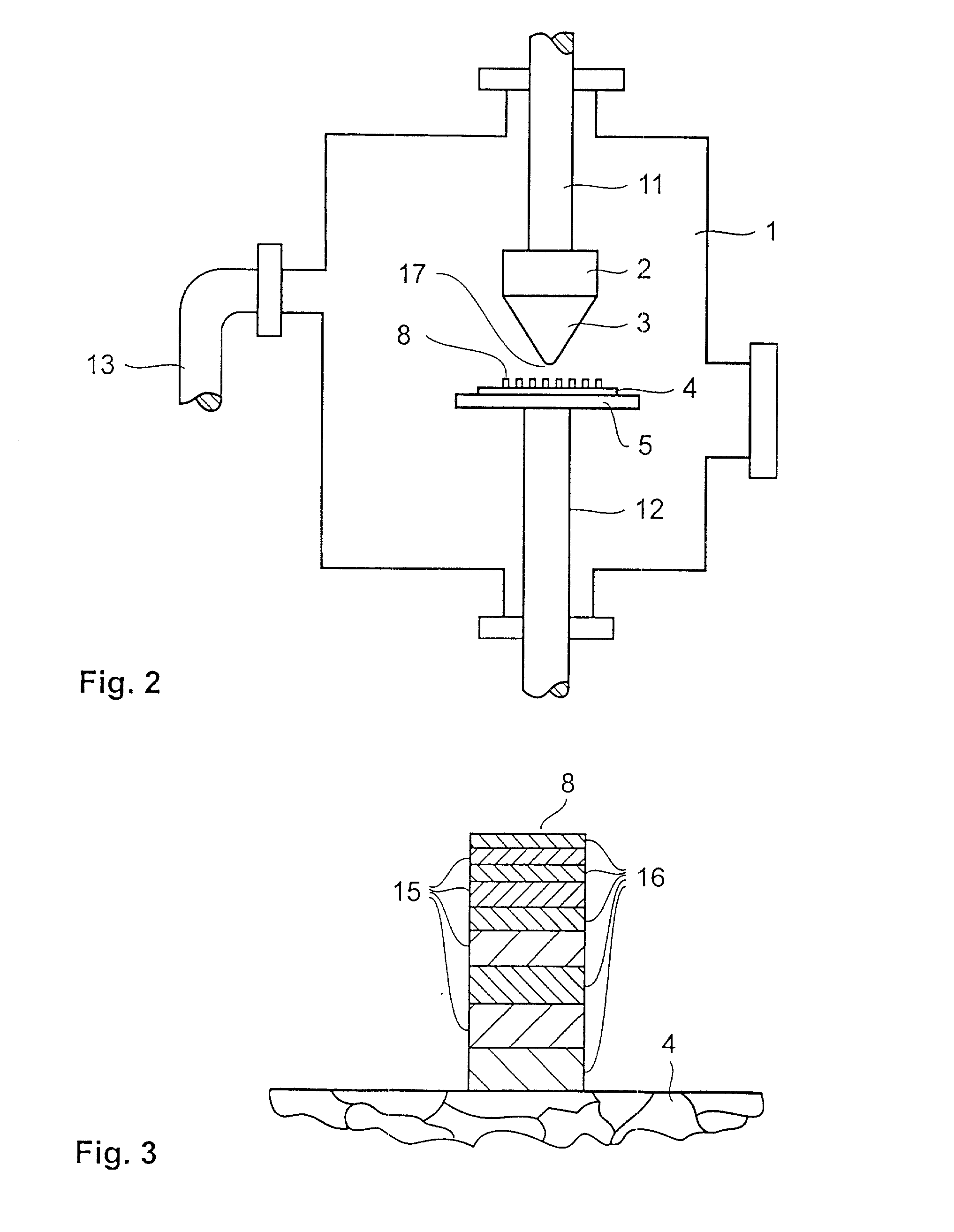Crystals comprising single-walled carbon nanotubes
a single-walled carbon nanotube and crystal technology, applied in the manufacture of vacuum tubes, electrical systems, vessels or leading-in conductors, etc., can solve the problems of inability to control chirality and diameter, and order arrays beyond short sections of ordered single-walled carbon nanotubes of tens of nanotubes, so as to achieve effective confinement of pillars, improve yield, and improve the confinement
- Summary
- Abstract
- Description
- Claims
- Application Information
AI Technical Summary
Benefits of technology
Problems solved by technology
Method used
Image
Examples
Embodiment Construction
[0031] In the following, the various exemplary embodiments of the invention are described.
[0032] Crystals of single-walled carbon nanotubes are produced using a method involving nanoscale patterning of solid-state precursor materials. Controlled mixtures of fullerenes, here C.sub.60 molecules and Nickel as catalyst are evaporated through nanometer-scale apertures of a patterned evaporation mask onto a molybdenum substrate. The resulting structures are then thermolysed under vacuum in the presence of a magnetic field. A combination of electron diffraction studies and electron energy loss spectroscopy (EELS) confirms that the produced structures are almost perfect rod-like crystals of single-walled carbon nanotubes oriented normal to the surface of the substrate.
[0033] In FIG. 1 a first schematic view of an apparatus for manufacturing single-wall carbon nanotubes is depicted.
[0034] A reaction chamber 1 comprises four openings, one being penetrated by a sample-holder 9 for holding a su...
PUM
| Property | Measurement | Unit |
|---|---|---|
| thickness | aaaaa | aaaaa |
| thickness | aaaaa | aaaaa |
| pressure | aaaaa | aaaaa |
Abstract
Description
Claims
Application Information
 Login to View More
Login to View More - R&D
- Intellectual Property
- Life Sciences
- Materials
- Tech Scout
- Unparalleled Data Quality
- Higher Quality Content
- 60% Fewer Hallucinations
Browse by: Latest US Patents, China's latest patents, Technical Efficacy Thesaurus, Application Domain, Technology Topic, Popular Technical Reports.
© 2025 PatSnap. All rights reserved.Legal|Privacy policy|Modern Slavery Act Transparency Statement|Sitemap|About US| Contact US: help@patsnap.com



